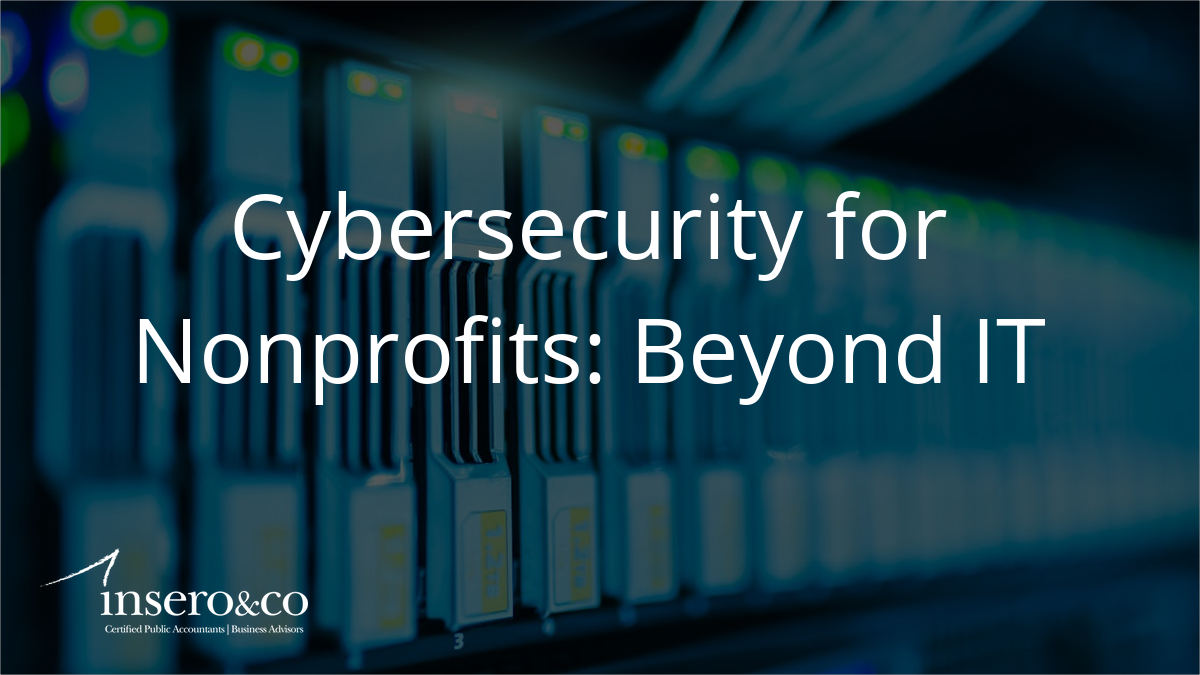INSIGHT ARTICLE |
Authored by RSM US LLP
As many plan fiduciaries can attest, retirement plan fees can be extremely complex and difficult to understand. This is due in large part to the lack of transparency surrounding plan fees and services as well as the complicated and varying methods in which service providers are compensated. A plan sponsor has a fiduciary duty to ensure that only reasonable expenses are paid by the plan. Thus, it is imperative for a plan sponsor to be able to identify all plan-related fees in order to properly monitor and manage them.
Common plan services and fees
Let’s start with understanding common services and their fees related to an employer-sponsored retirement plan:
- Investment fees include the cost of investment management and other investment-related activities. These fees are typically charged as a percentage of assets that are commonly disclosed in mutual fund prospectuses and required plan fee disclosures. Actively managed investments typically have higher investment expenses than passively managed (i.e., index) investments. Plan participants pay investment fees.
- Plan administrative fees cover general management like record-keeping, compliance testing, account statements, required notices and trustee services. These fees also cover any additional services the plan may have access to, like customer service representatives, employee education and website account access. The plan sponsor has the option to pay these fees or pass all or a portion of the fees on to plan participants.
- Individual service fees are typically transactional or when additional services are utilized. These fees are charged to participant accounts for actions such as taking a loan, making a withdrawal or receiving individual investment advice.
- Other fees commonly charged to an employer-sponsored retirement plan are for professional services such as advisor, consulting and plan audit fees. These fees may be paid by the employer but can be paid from participant accounts as well.
What is revenue sharing?
Revenue sharing within an employer-sponsored retirement plan is a method of collecting fees through a fund’s investment expense, then paying a portion of the collected expense to other plan service providers. Since revenue sharing is collected through the investment expense, the investment options’ overall return is net any revenue sharing fees.
Revenue sharing can be difficult to identify because often, it is not clearly disclosed in readily understandable terms. Types of revenue sharing include the following:
- 12b-1 fees are distribution fees paid out of a fund’s assets that are often used to pay commissions and marketing expenses as well as other administrative services.
- Sub-TA and shareholder servicing fees are administrative fees shared by the mutual fund with the record keeper to handle participant record-keeping services.
The graph below illustrates how 12b-1, Sub-TA and shareholder servicing fees can be included in a fund’s overall investment expense. The investment management fee is paid to the investment manager, thus not considered revenue sharing.
Common issues with revenue sharing
For plan sponsors, there has been a steady shift away from using revenue sharing to pay plan fees. According to the 2019 Deloitte Defined Contribution Benchmarking Survey Report, only 33% of plan sponsors surveyed said they’re using revenue sharing to cover all of the record keeping and administrative expenses in 2019—a significant drop from 50% in 2015.
With increasing focus from the Department of Labor over the last several years on plan fees and mounting litigation surrounding plan fees, it isn’t surprising that plan sponsors and plan participants want to gain a better understanding of the fees they’re paying. Notably, plan sponsors want to avoid some of the pitfalls related to using revenue sharing to pay plan fees, including:
- Lack of fee transparency: Plan fees paid through revenue sharing are often perceived as a hidden cost by plan participants and plan sponsors. Plan participants may think they don’t pay any plan fees because they don’t see an itemized cost for record keeping and administrative services listed on their retirement plan statements.
- Inequality of fee payments: Some funds pay more in revenue sharing than others. Thus, participants with similar account balances may not pay equal fees due to their specific investment choices and asset allocation. Some record-keeping providers have the ability to level the amount of revenue sharing across all investments to ameliorate this situation, but many plans still either do not take advantage of this or do not have the option to level revenue sharing.
Example:
- Harder to manage costs: The lack of fee transparency surrounding revenue sharing simply makes it harder to monitor and manage plan fees as plan assets grow. The old adage “out of sight, out of mind” is relevant here, as plan sponsors can easily lose track of fee amounts. Moreover, revenue sharing can be complex; consequently, it isn’t something plan sponsors can easily identify.
Plan sponsors have alternative options
As aforementioned, fewer plans are using revenue sharing to pay fees. Alternatively, plan sponsors have multiple options in structuring the payment of plan fees to avoid issues commonly associated with using revenue sharing. None of the options below collect fees through revenue sharing, so fees are separately, and thus easily, distinguishable from investment expenses.
Plan sponsors should discuss with their advisor and service providers how to best structure their fees based on their circumstances and options available to their plan. Maintaining an ongoing dialogue on plan fees also helps plan sponsors fulfill their fiduciary responsibilities to their plan participants.
Fees can be collected by the following methods:
- Plan sponsor paid: Fees are invoiced to the plan sponsor, and the company directly pays each service provider. This option, certainly the most transparent, reduces fiduciary risk to the plan sponsor; however, not all companies can afford to pay all plan fees. If the plan sponsor does decide to pay plan fees through a corporate bank account, they are tax deductible. Note: Plan sponsors cannot pay both investment fees and individual service fees.
- Participant paid: Plan fees can still be paid through plan assets without using revenue sharing: Fees can be either deducted from participant accounts as a dollar amount, percentage of assets or a combination of both. With this method, fees are not hidden inside the investment expense; instead, fees are line-itemed out as a separate fee on participant statements and fee disclosures, making them easier to identify and manage.
- Both plan sponsor and participant paid: Plan sponsors have the option to share plan costs with plan participants. Often, paying just a portion of the plan fees is more affordable for plan sponsors and helps reduce the amount of fees coming out of plan participant accounts.
Do you have questions or want to talk?
Call us at (800) 232-9547 or fill out the form below and we’ll contact you to discuss your specific situation.
This article was written by RSM US LLP and originally appeared on 2021-02-16.
2020 RSM US LLP. All rights reserved.
https://rsmus.com/what-we-do/services/wealth-management/services-we-offer/retirement-plan-advisory/understanding-revenue-sharing.html
The information contained herein is general in nature and based on authorities that are subject to change. RSM US LLP guarantees neither the accuracy nor completeness of any information and is not responsible for any errors or omissions, or for results obtained by others as a result of reliance upon such information. RSM US LLP assumes no obligation to inform the reader of any changes in tax laws or other factors that could affect information contained herein. This publication does not, and is not intended to, provide legal, tax or accounting advice, and readers should consult their tax advisors concerning the application of tax laws to their particular situations. This analysis is not tax advice and is not intended or written to be used, and cannot be used, for purposes of avoiding tax penalties that may be imposed on any taxpayer.
RSM US Alliance provides its members with access to resources of RSM US LLP. RSM US Alliance member firms are separate and independent businesses and legal entities that are responsible for their own acts and omissions, and each are separate and independent from RSM US LLP. RSM US LLP is the U.S. member firm of RSM International, a global network of independent audit, tax, and consulting firms. Members of RSM US Alliance have access to RSM International resources through RSM US LLP but are not member firms of RSM International. Visit rsmus.com/aboutus for more information regarding RSM US LLP and RSM International. The RSM(tm) brandmark is used under license by RSM US LLP. RSM US Alliance products and services are proprietary to RSM US LLP.

Insero & Co. CPAs, LLP is a proud member of RSM US Alliance, a premier affiliation of independent accounting and consulting firms in the United States. RSM US Alliance provides our firm with access to resources of RSM US LLP, the leading provider of audit, tax and consulting services focused on the middle market. RSM US LLP is a licensed CPA firm and the U.S. member of RSM International, a global network of independent audit, tax and consulting firms with more than 43,000 people in over 120 countries.
Our membership in RSM US Alliance has elevated our capabilities in the marketplace, helping to differentiate our firm from the competition while allowing us to maintain our independence and entrepreneurial culture. We have access to a valuable peer network of like-sized firms as well as a broad range of tools, expertise, and technical resources.
For more information on how Insero & Co. CPAs can assist you, please call (800) 232-9547.







